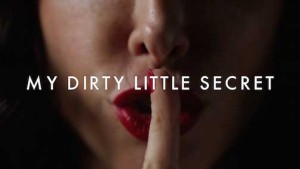 Now in its third season on Discovery ID, My Dirty Little Secret follows a simple yet effective formula – combine dramatic re-enactments, interviews with real participants, archival footage and voiceover to tell the real-life stories of people with secret lives who are willing to kill to keep that way. Key to the show’s effective storytelling is the role of audio. For post house HOBO and engineer Chris Stangroom that means effectively mixing the show’s many audio elements, including recording the voiceover narration, on-set dialogue, stock music and sound design.
Now in its third season on Discovery ID, My Dirty Little Secret follows a simple yet effective formula – combine dramatic re-enactments, interviews with real participants, archival footage and voiceover to tell the real-life stories of people with secret lives who are willing to kill to keep that way. Key to the show’s effective storytelling is the role of audio. For post house HOBO and engineer Chris Stangroom that means effectively mixing the show’s many audio elements, including recording the voiceover narration, on-set dialogue, stock music and sound design.
“HOBO first came onto our radar two years ago when we were starting production on the first season of My Dirty Little Secret,” said Kevin Fitzpatrick, executive producer, Red Marble Media, producers of the show. “We needed an audio house that could help us find the right balance for a complex show. If the series was going to succeed we needed to ensure the audience could hear the episodes in the right way.”
For Fitzpatrick, that means combining cutting edge audio technology with artistic instinct. “In the end Chris and HOBO give us a mix that truly elevates the quality of the program,” he said.
Stangroom’s audio post toolkit includes Pro Tools 11, Waves plug-ins, Avid‘s ReVibe reverb software, which he uses to make things more dense and exciting, and DMG Audio plug-in Equilibrium. He explained that his role ultimately is to analyze each audio component and ask, “how can I make this better?”
“Dialogue and story are always important,” Stangroom said, “but for this show we consciously use the music more for dramatic effect, and try to keep the sound effects minimal until that perfect moment in the story when it really make an impact on the viewer.”
To build dramatic tension, dialogue will echo as ominous strings and drums blend with sonic drones that build toward a jolting sound design element like sharpened knife screech or a shattered glass, very often followed by jarring silences.
“What is most effective about this show’s audio is how it will often hit these high dramatic moments, and rather then cut right to the next scene, they will let what just happened sink in with audiences for an extra beat or two longer than most shows. It creates a great sense tension and a feeling that the dramatic stakes have been raised completely,” explained Stangroom.
For Howard Bowler, HOBO’s president, it’s important when mixing to never follow a pre-set template, but rather let the story and the audio elements guide the mix, never the opposite.
“People sometimes ask ‘how do I make something sound scary,’ and the truth is there are some things technically you can do, but it’s better to rely on what the production gives you,” Bowler said. “Audio post is not static, it’s a constantly evolving process, and the key is to listen and ask yourself if you’re capturing what you want the audience to feel, and what tools are at your disposal to make it happen. If you’re only leaning heavily on effects or reverbs, they lose their effectiveness.”





